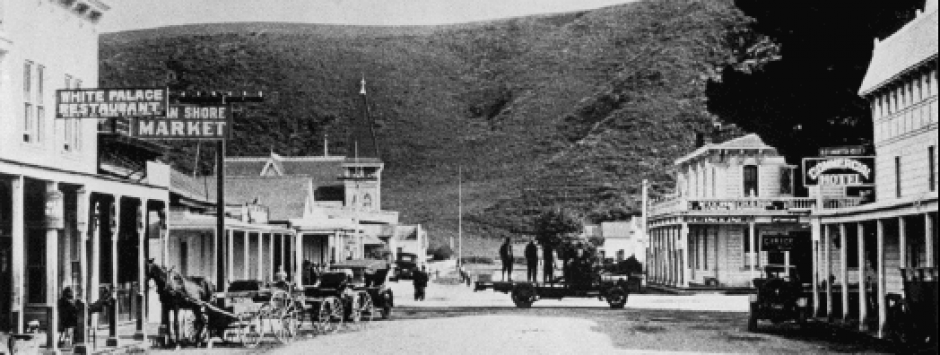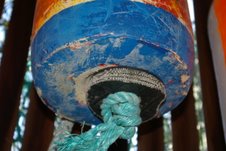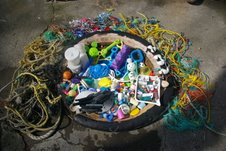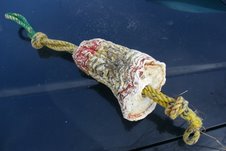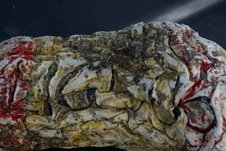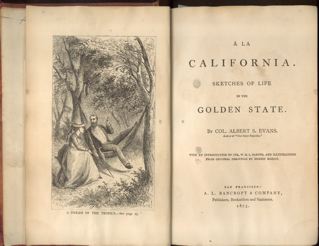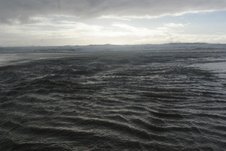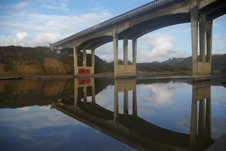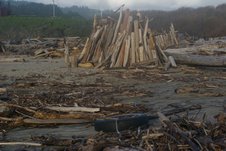What the heck is a “Vulcan Donut?”
Story by John Vonderlin
Email john: [email protected]
Hi June,
When I first started finding what I now call, “Vulcan’s Donuts,” I didn’t have the faintest idea where they had come from or what they were used for.
Because of the tread on one side, it was obvious they had been cut from tires. I also assumed the cheapness of the raw material, and its toughness, were crucial in whatever industry they were used in. But, the great variety of sizes they come in added a strong dose of mystery as to their purpose. or should I say purposes?
While “Vulcan’s Donuts” are non-buoyant themselves, needing wave action to kick them ashore from their resting spots on the ocean bottom, one day at the beach it all became clear when one floated in still at work. Here’s a couple of pictures from my collection and some of the individual “Donuts.”
Are they familiar to you?
As you’d expect, they are used in the fishing industry which explains the cheapness and toughness aspects. If you’ve walked the docks at Pillar Point Harbor, and looked carefully at the boats, and their equipment, you’ve most certainly seen these little non-buoyant rings at work.
Vulcan’s Donuts are used on the bottom of crab pot buoys to keep the knot in the rope from pulling into or through the buoy
Enjoy John
P.S. I retrieved the piece of the Model T tire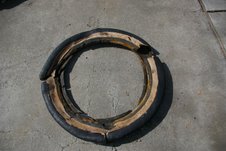
that I had given to Meg in December. With a little flipping and flopping I fitted it all together and “Voila,” it was complete. The fact that the three pieces just sat off Pescadero Beach’s “vomitorium” until they were spit up tells me something about the dynamics of the whole process. I’m just not sure what. I’ve attached a picture of the tire.
